The days may be getting shorter, but late summer/early fall is prime spider-watching season in the maritime succulent and coastal sage habitats of Southern California. Many species have spent the spring and summer months growing up, feeding on the abundant insect life, and are now reaching their full-grown adult size. One very common species during this time of year, the silver argiope (Argiope argentata) is also among the most impressive of our local arachnids. Also known as the silver garden orb-weaving spider, this sizeable arachnid is a frequent encounter at Cabrillo National Monument. Here at the park, their recognizable spiral webs reinforced with diagonal stabilimentum are often strewn between the sharp broad leaves of Shaw’s agave or the spiny pads of prickly pear cactus. Like most orb weaving species, the female silver argiope is considerably larger than the male. She reaches 12mm, compared to his 4mm total body length; her long legs adding an even greater reach over the comparatively petite male.
Recently, I set out to see if I could find a pair and get a few photographs to illustrate this extreme dimorphism. After hiking the park for a while, inspecting any webs I could find along the way, I eventually came upon a stand of prickly pear that held a male and female sharing a web. The situation was ideal for the shot: they were perfectly centered - the male on one side of the web, the gargantuan female on the other; and most importantly, there was an opening at the edge of the cactus that would allow me to get the camera close without impaling myself on the sharp cactus needles surrounding the web.
After taking a few shots of the pair, I was witness to another fascinating but quite unexpected aspect of silver argiopes: their mating behavior.
Here’s the play by play:
- With the pair still in the center of her spiral trap, a second male entered the scene from the bottom edge of the web.
- Upon the disturbance of the web, the female quickly left the center and approached the new male.
- That male then jumped onto the female and quickly mated with the her. (Male spiders have copulatory organs on leg-like appendages near the head called pedipalps, which transfer sperm to the female’s genital opening called the epigyne)
- After three or four seconds, he let go of the female, only to be immediately captured by her and immobilized, as he was quickly wrapped in a sheet of web.
- Carrying the male in a silken purse, the female returned to the center of her web and positioned herself directly across from the other male - who remained perfectly still as she proceeded to eat her ex-mate.
Though it is, perhaps, a rarely observed event, ‘sexual cannibalism’ is not uncommon among spiders and, as it turns out, is the norm for this species. Male silver argiopes are short lived. Once mature, they will mate but once or twice before they die. Usually, males that manage to breed and not fall prey to their partner, spontaneously die during or immediately after their second mating. Though it sounds as though the male is somewhat expendable in this equation, his sacrifice is crucial to ensuring that his genes are passed on. During mating, parts of his copulatory organs break off in place, which serves as a sort of plug to prevent potential future suitors from mating with the same female. If the plug works and fertilization is successful, his offspring will also benefit from his nutritional contribution to their mother, who will soon care for the eggs and protect the brood until the spiderlings are ready to leave the web.
This this 10-second episode of life and death in the undergrowth was captivating, and luckily, I was able to photograph the sequence. The levels of nature observation are near infinite. Even for someone who has held a lens to these small worlds for many years, I am regularly met by something unexpected and new. The next time you are at Cabrillo, or any wild area, sit down at a web and just watch for while. You never know what wonders might be revealed. Happy spider watching!
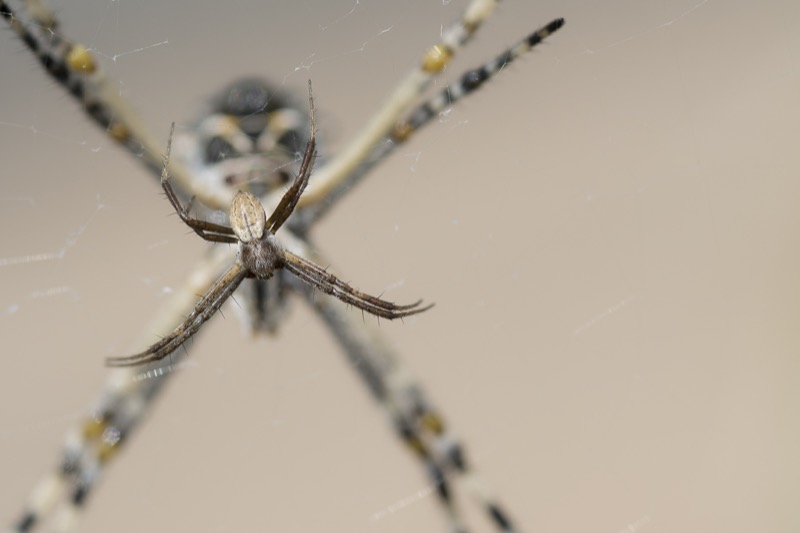
NPS/Michael Ready - The male silver argiope (Argiope argentata) is markedly smaller than the female (background). Here they temporarily share her web during courtship.
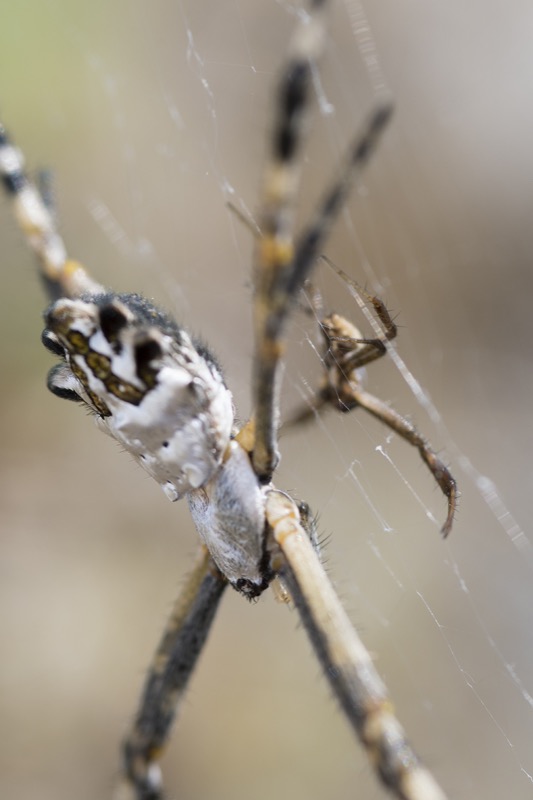
NPS/Michael Ready - The female silver argiope (Argiope argentata) is much larger than the male (background). Here, they temporarily share her web during courtship.
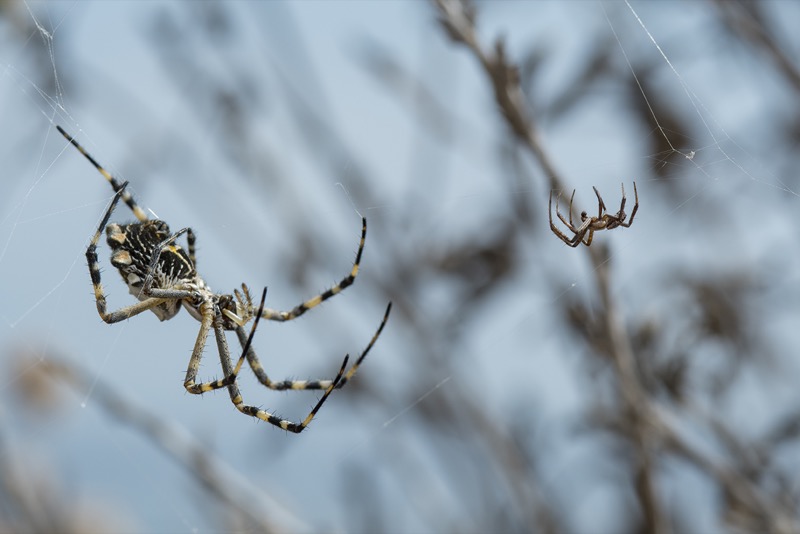
NPS/Michael Ready - A second male (right) enters the web courting the much larger female Silver argiope or silver garden orb-weaving spider (Argiope argentata)

NPS/Michael Ready - A male silver argiope (Argiope argentata) mates with the much larger female.
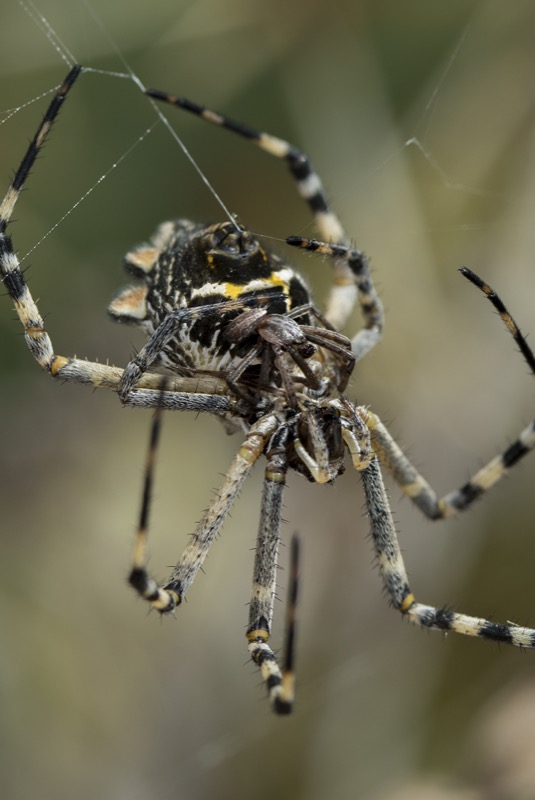
NPS/Michael Ready - A male silver argiope (Argiope argentata) mates with the much larger female.
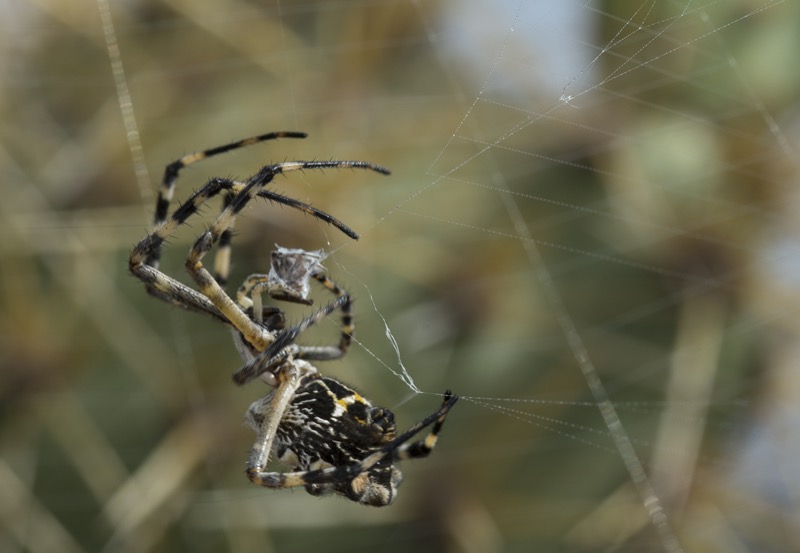
NPS/Michael Ready - Only a second or two after mating, the female silver argiope (Argiope argentata) wraps her ex-partner in web. He will soon become a part of her nutrition.
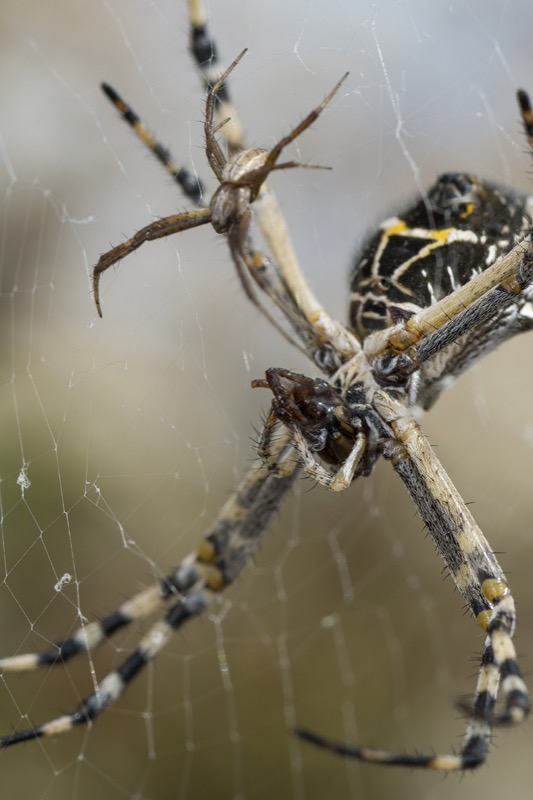
NPS/Michael Ready - A female silver argiope (Argiope argentata) consumes the male that only moments ago was her mate. Another male stands by.
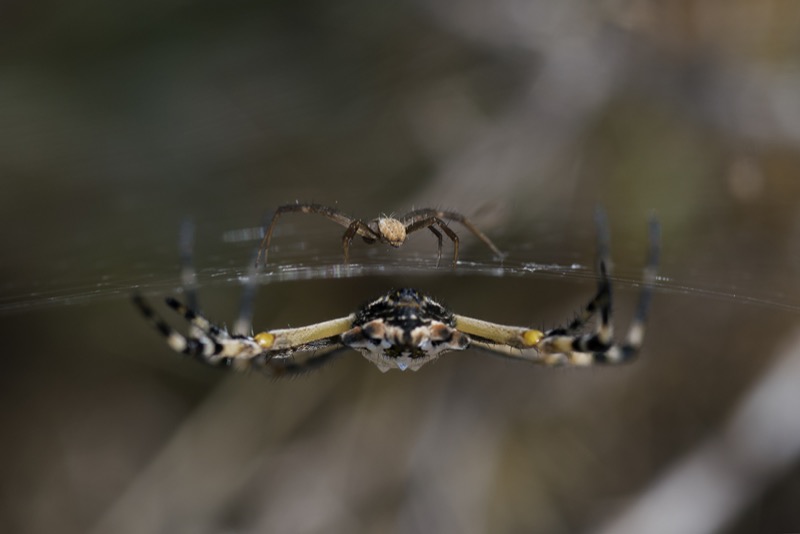
NPS/Michael Ready - The female silver argiope (Argiope argentata) is back at the hub of her web, and has quickly consumed her recent mate. The original male is perched on the opposite side and remains perfectly still, for now.
Sources:
Foelix, R 2010. Biology of Spiders. New York, US: Oxford University Press.
Ghione, S, Costa FG 2011 Female attack is not necessary for male copulatory organ breakage in the sexually cannibalistic spider Argiope argentata (Araneae: Araneidae). Journal of Arachnology 39: 197–200.S.
Jäger, P 2012 A review on the spider genus Argiope Audouin 1826 with special emphasis on broken emboli in female epigynes (Araneae: Araneidae: Argiopinae). Beiträge zur Araneologie 7: 272-331
Levi, H. W. 1968. The spider genera Gea and Argiope in America. Bulletin of the Museum of Comparative Zoology
